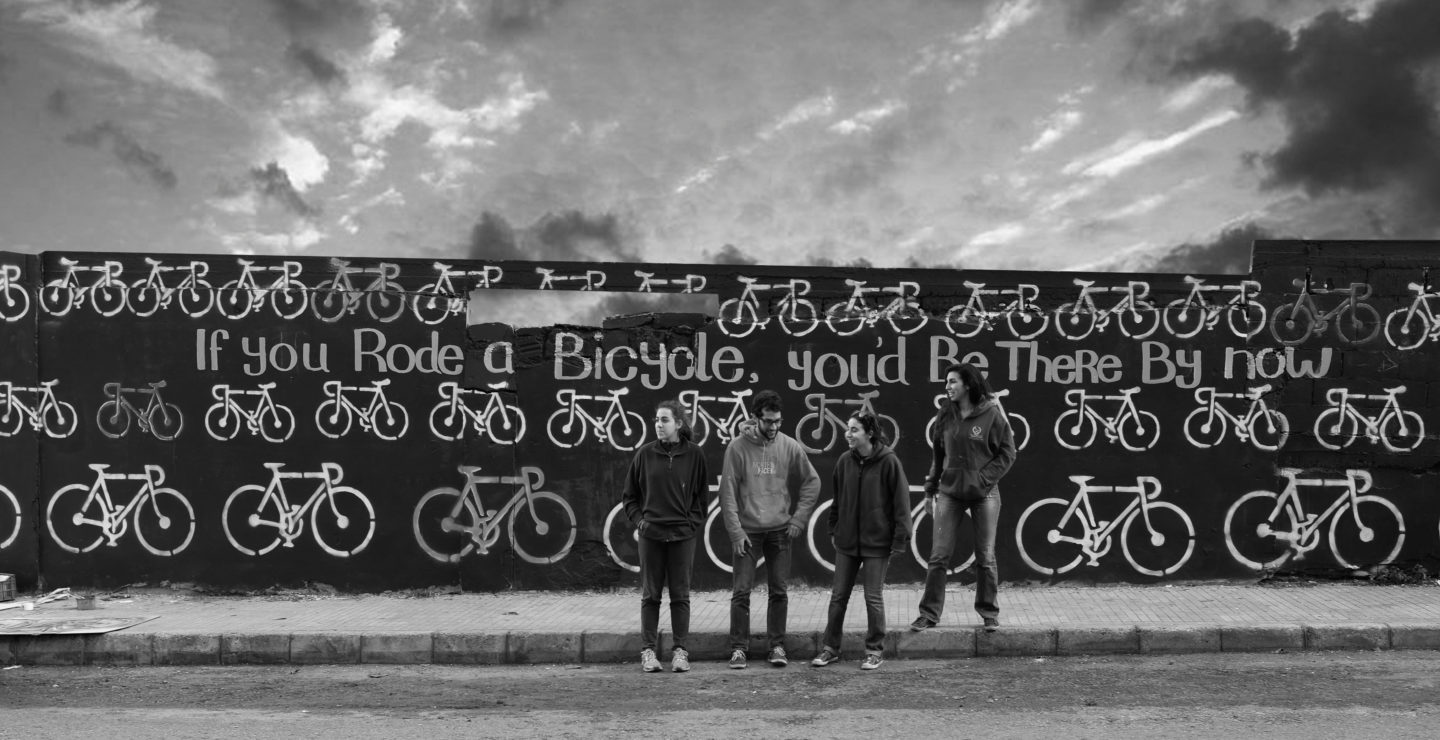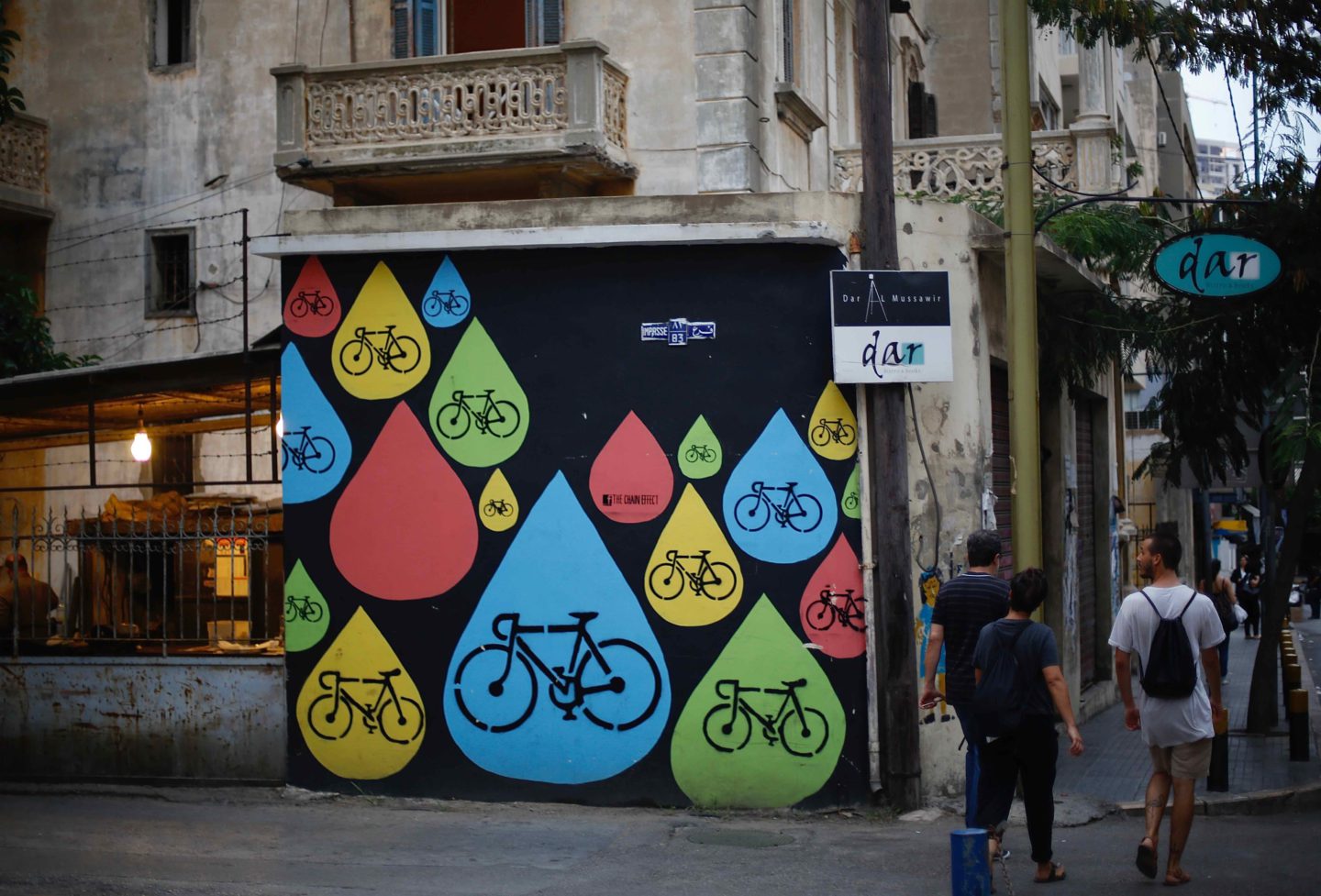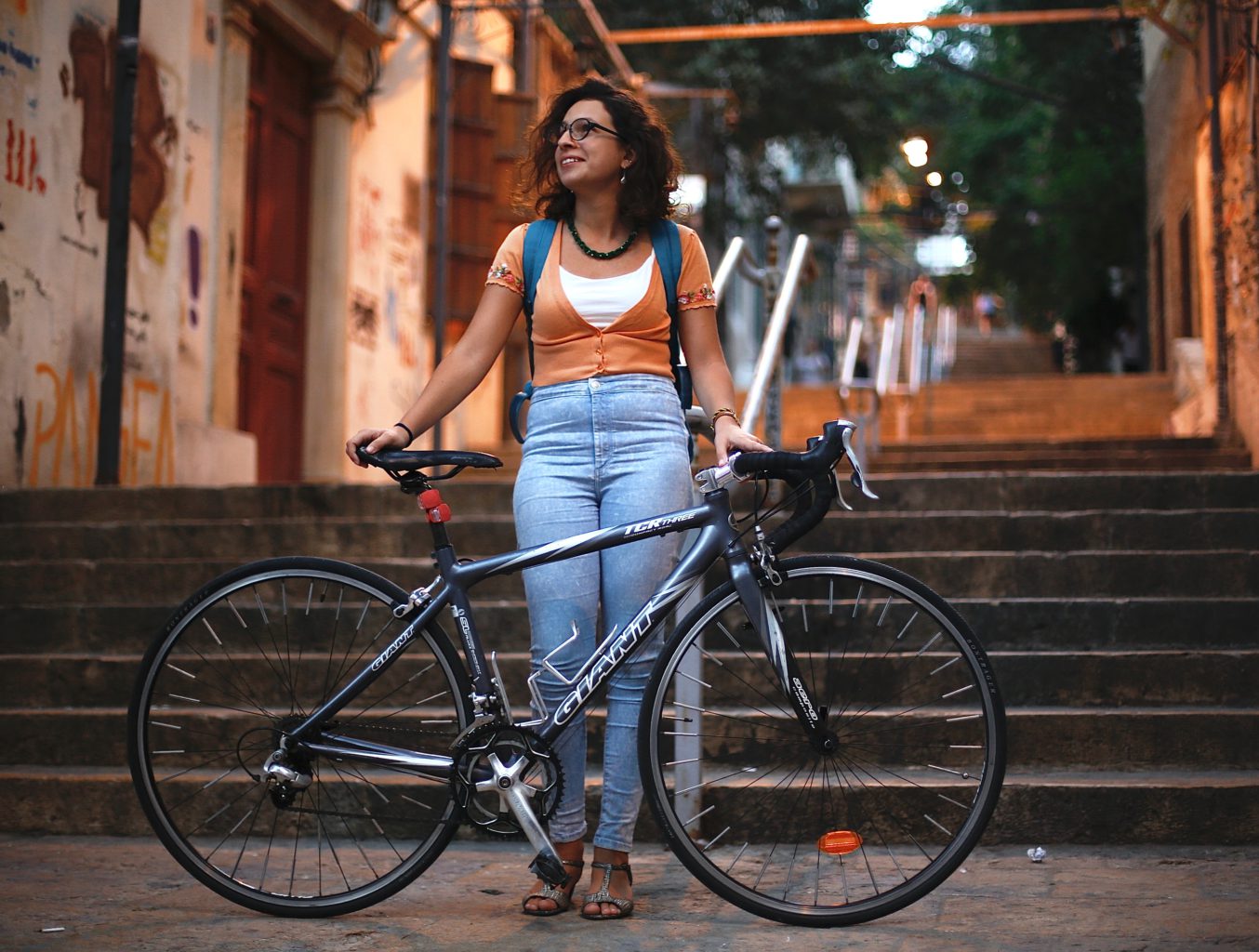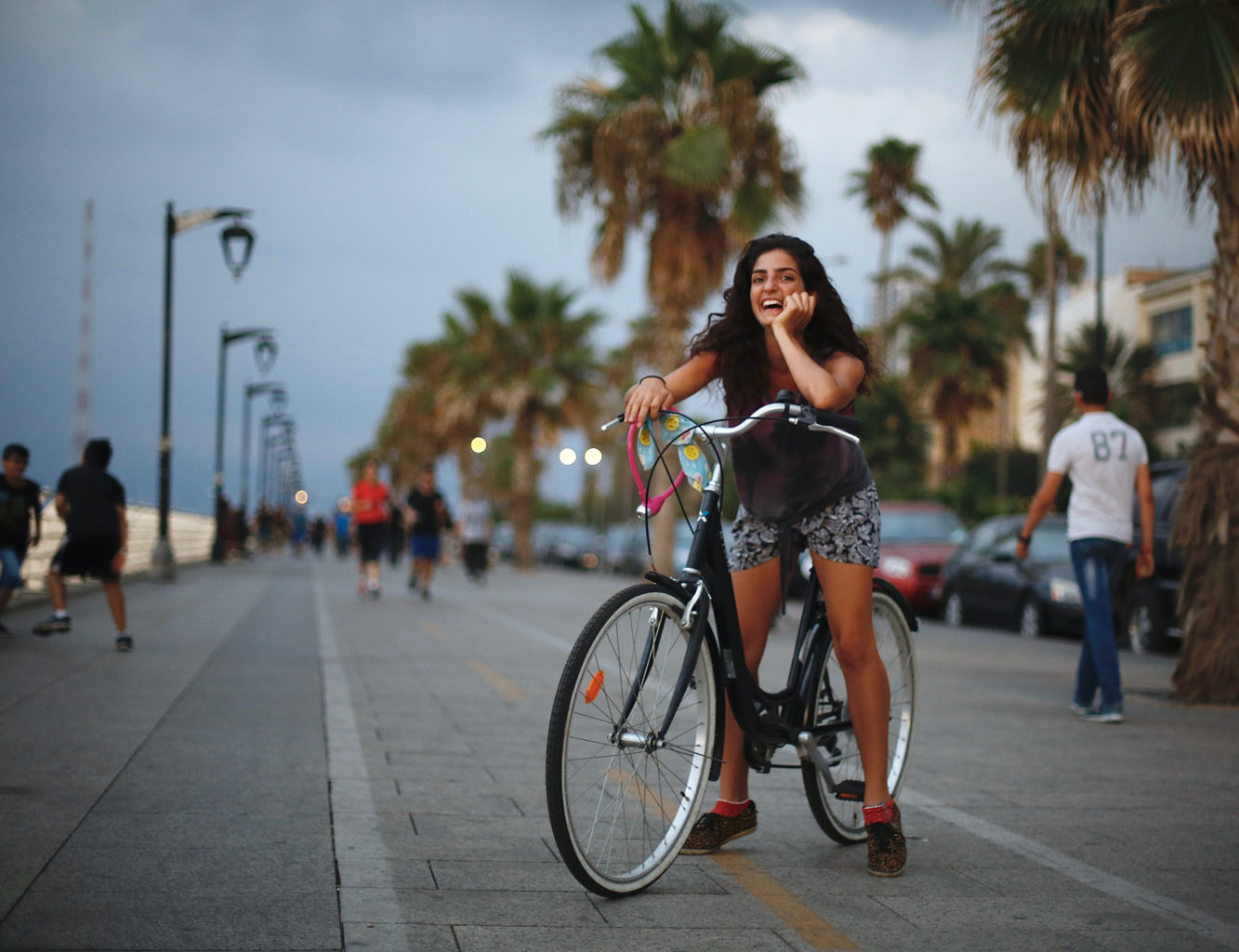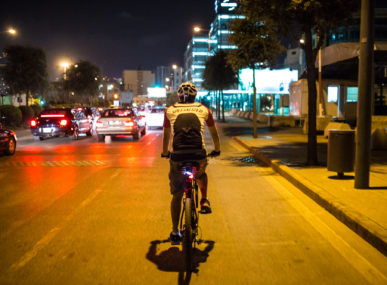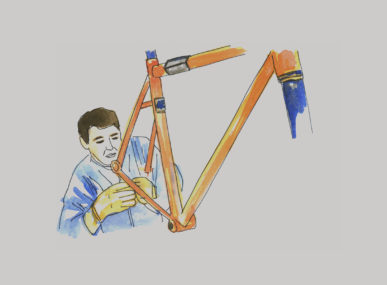Creating a city built for bikes:
As demonstrated by that photography series, it is not like people in Beirut do not bike. They do, but that is not what cycling mobility is about.
According to Hawa, there are many groups who rent bikes and organize cycling rides, but most are geared towards recreation and sports cycling. Cycling mobility is about shifting public perception, seeing biking not just as a fun activity, but as a viable and effective way to travel around a city.
Infrastructure is just one of the factors that affect this. Hawa is quick to acknowledge that Beirut is far from perfect, and understands people’s perceptions that the streets are neither safe nor equipped for cyclists. Much of the post-war road reconstruction was car-centric, and created busy road arteries that sliced up the city.
At the same time, Hawa argues Beirut is potentially ideal for cycling. “The structure of the city and its size means it has [the capacity] to be a good bike city. It’s compact, very dense, and the old neighborhood structures are still there.”
The next step is creating the navigational infrastructure Beirut cyclists need, to feel confident traversing the city on two wheels. “If you’re used to navigating the city by car, it can be difficult to navigate using a different form of transportation,” Hawa admits.
To ease that adjustment, The Chain Effect is creating a bike map of Beirut. The map will pinpoint such information as the best crossing points for cyclists, underpasses available for pedestrians and bikes, and routes that involve less hilly sections. Hawa and the team are in the data collection phase now, and plan to eventually create a printed version of the map, as well as a digital version that could serve as the bicycle layer on Google Maps.
A Beirut cycling map would also be a way for people to discover more about the city where they live. Take, for example, one of Hawa’s favorite cycling discoveries: a little tunnel that passes under a major highway in south Beirut. The tunnel connects cyclists and pedestrians with a neighborhood rich in history, heritage, and sense of community.
“Cycling was always a way for me to rediscover these new neighborhoods, and break the stereotypes people have about certain areas of the city,” Hawa says. “I live in the suburbs, but use my bike to get around Beirut. If I had to drive around the city every day I would have gone crazy. Cycling was a way for me to like Beirut again, and actually live here.”

